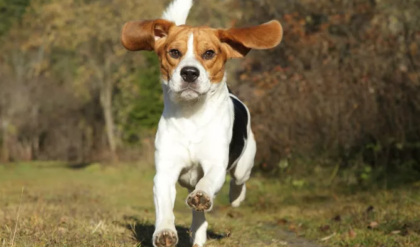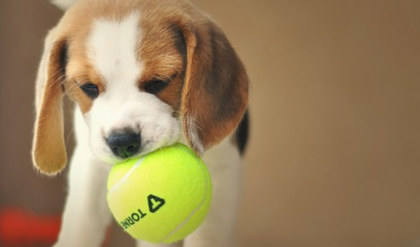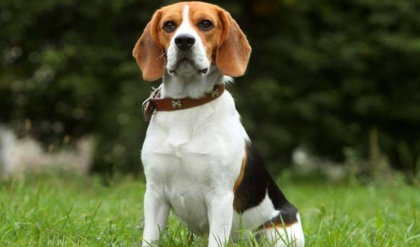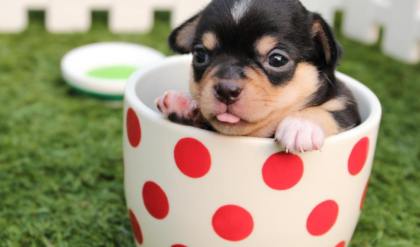Choosing the right dog breed for your lifestyle is a crucial decision that can impact your life for years to come. Two popular breeds that often find themselves in the spotlight are the Beagle and the Chihuahua. While both make excellent companions, they have distinct characteristics that set them apart. This comprehensive guide will explore the key differences between Beagles and Chihuahuas, helping you determine which breed aligns best with your personality, living situation, and expectations as a pet owner.

Size and Personality: A Tale of Two Extremes
Physical Dimensions
Beagles are medium-sized dogs, typically standing 13 to 15 inches tall at the shoulder and weighing between 20 to 30 pounds. Their compact, muscular build is well-suited for their original purpose as hunting dogs. Beagles have a distinctive appearance with long, floppy ears, a square-cut muzzle, and large, expressive eyes that often give them a pleading look.
In stark contrast, Chihuahuas are one of the smallest dog breeds in the world. They usually stand no taller than 9 inches and weigh between 3 to 6 pounds. Their tiny stature is often accentuated by their large, round eyes and erect ears, giving them an alert and attentive expression.
Temperament Traits
Beagles are known for their friendly and outgoing nature. They’re social butterflies that thrive on companionship, both from their human family and other dogs. Their curious nature and high energy levels make them excellent playmates for children and active adults alike. Beagles are generally good-natured and even-tempered, but their strong hunting instincts can sometimes lead to stubbornness or distraction, especially when they catch an interesting scent.
Chihuahuas, on the other hand, often form intense bonds with one particular person. While they can be affectionate with their entire family, they typically choose a favorite human to whom they show unwavering loyalty. Chihuahuas can be more reserved or even standoffish with strangers, and their small size often makes them wary of unfamiliar situations or people. Despite their tiny stature, many Chihuahuas have big personalities and aren’t afraid to stand up for themselves.

Adaptability to Living Spaces
The size difference between these breeds significantly impacts their suitability for different living environments. Beagles, being medium-sized and energetic, do best in homes with a yard or easy access to outdoor spaces where they can run and play. They can adapt to apartment living if given sufficient exercise, but their tendency to bark and howl might not make them ideal neighbors in close quarters.
Chihuahuas, thanks to their diminutive size, are excellently suited for apartment living. They require minimal space and can get most of their exercise needs met indoors. This makes them popular choices for city dwellers or those with limited outdoor space. However, it’s important to note that despite their small size, Chihuahuas still need regular exercise and mental stimulation to prevent behavioral issues.
Social Needs and Interaction
Beagles are pack animals by nature and don’t do well when left alone for long periods. They crave companionship and can become destructive or develop separation anxiety if not given enough attention. Their social nature makes them excellent family dogs, as they generally get along well with children and other pets.
Chihuahuas, while affectionate with their chosen people, can be more independent. They often prefer the company of their favorite person over large groups and may not be as tolerant of rough play from children. Their small size also makes them more vulnerable to injury during play, so supervision is crucial when they interact with larger dogs or young children.

Grooming Requirements: From Low Maintenance to Regular Care
Coat Types and Shedding Patterns
Beagles have a short, dense double coat that’s relatively easy to maintain. They shed moderately year-round, with heavier shedding occurring twice a year during seasonal changes. Their coat is weather-resistant, which served them well in their hunting dog past but can make them prone to a doggy odor if not bathed regularly.
Chihuahuas come in two coat varieties: smooth (short-haired) and long-haired. Smooth-coated Chihuahuas have a glossy, close-lying coat that sheds minimally and requires little grooming beyond occasional brushing. Long-haired Chihuahuas have a softer, fluffier coat that may require more frequent brushing to prevent tangles and matting.
Brushing and Bathing Routines
For Beagles, a weekly brushing session with a rubber grooming mitt or a medium-bristle brush is usually sufficient to remove loose hair and distribute skin oils. They typically only need baths every few months unless they’ve gotten particularly dirty or smelly. Regular ear checks and cleaning are important for Beagles due to their long, floppy ears, which can trap moisture and debris.
Smooth-coated Chihuahuas are among the easiest dogs to groom. A quick once-over with a soft brush or grooming glove once a week is usually enough to keep their coat in good condition. Baths are only necessary every few months or when they get dirty. Long-haired Chihuahuas require more frequent brushing, ideally a few times a week, to prevent tangles and mats. They may also need more frequent baths to keep their coat clean and healthy.
Nail Care and Dental Health
Both breeds require regular nail trimmings, typically every 2-4 weeks depending on their activity level and the surfaces they walk on. Chihuahuas, in particular, may need more frequent nail trims as their tiny paws don’t always wear down nails as quickly as larger, more active dogs.
Dental care is crucial for both breeds but is especially important for Chihuahuas. Their tiny mouths can lead to overcrowding of teeth, making them prone to dental issues. Daily tooth brushing is ideal for both breeds, but at minimum, aim for 2-3 times per week. Regular professional dental cleanings are also recommended, particularly for Chihuahuas.

Vocalization: From Howls to Yips
Beagle’s Distinctive Voice
Beagles are known for their vocal nature, which stems from their hunting background. They have a distinctive, loud bark that can quickly turn into a howl. This \baying\ useful for alerting hunters to their location but can be problematic in urban or suburban settings. Beagles may vocalize for various reasons, including excitement, boredom, or in response to other dogs or interesting scents.
Chihuahua’s Alert Barking
Chihuahuas, despite their small size, can be quite vocal. They have a sharp, high-pitched bark that they’re not afraid to use. Chihuahuas often bark to alert their owners to potential threats, which in their mind can include everything from the mailman to a leaf blowing across the yard. Their protective nature and keen senses make them excellent watchdogs, but without proper training, they can become nuisance barkers.
Training and Management of Vocalization
For both breeds, early socialization and training are key to managing their vocalization. Beagles can be taught to respond to quiet commands, but their howling instinct is deeply ingrained and may never be completely eliminated. Providing plenty of mental and physical stimulation can help reduce excessive barking due to boredom or frustration.
Chihuahuas respond well to positive reinforcement training to curb excessive barking. Teaching them a \quiet\d rewarding calm behavior can be effective. It’s important to address any underlying anxiety or fear that may be causing the barking, especially in Chihuahuas who can be prone to nervousness.
Training Challenges and Rewards
Beagle’s Intelligence and Independence
Beagles are intelligent dogs with a strong independent streak, which can make training both rewarding and challenging. Their keen sense of smell can easily distract them during training sessions, and their stubbornness may test an owner’s patience. However, with consistent, positive reinforcement-based training methods, Beagles can learn a wide variety of commands and even excel in dog sports like tracking and agility.
Chihuahua’s Eagerness and Stubbornness
Chihuahuas are smart and often eager to please their favorite person, which can make them relatively easy to train in some aspects. They excel at learning tricks and basic obedience commands. However, they can also be stubborn and may try to manipulate their owners with their cute looks. Consistency is key in training Chihuahuas, as they can quickly pick up on any leniency and use it to their advantage.
Socialization Importance
Early socialization is crucial for both breeds but for different reasons. Beagles need to learn appropriate behavior around other dogs and people, as their friendly nature can sometimes lead to over-excitement. Exposing them to various environments, sounds, and experiences from a young age helps prevent fearfulness and promotes confident behavior.
For Chihuahuas, socialization is essential to prevent the development of fear-based aggression or excessive timidity. Introducing them to a wide variety of people, animals, and situations in a positive, controlled manner can help them become well-adjusted adults. This is particularly important given their tendency to be wary of strangers and new experiences.
House Training Considerations
House training can be a challenge for both breeds but for different reasons. Beagles, with their strong noses, may be easily distracted during potty breaks, requiring patience and consistency from their owners. Establishing a routine and using positive reinforcement are key to success.
Chihuahuas, particularly young puppies, have tiny bladders and may need more frequent potty breaks. Some Chihuahua owners find success with indoor potty training options like pee pads, especially in areas with harsh winters or for owners with limited mobility. However, this can make transitioning to outdoor potty habits more challenging later on.
Exercise Requirements: High Energy vs. Low Maintenance
Beagle’s Exercise Needs
Beagles are energetic dogs with a high exercise requirement. They were bred for endurance and can go for hours if given the opportunity. A minimum of 1-2 hours of exercise per day is recommended, which can include walks, playtime in a securely fenced yard, and mentally stimulating activities like scent work or puzzle toys.
Beagles excel in activities that engage their nose, such as tracking or hide-and-seek games with treats. They also enjoy canine sports like agility or flyball, which provide both physical exercise and mental stimulation. Regular exercise is crucial for preventing obesity and destructive behaviors that can result from boredom or pent-up energy.
Chihuahua’s Activity Level
Chihuahuas have significantly lower exercise needs compared to Beagles. A 15-30 minute walk each day, combined with some indoor playtime, is usually sufficient to keep a Chihuahua healthy and happy. Their exercise requirements can often be met with indoor activities, making them well-suited for apartment living or for owners with limited mobility.
Despite their lower exercise needs, Chihuahuas still benefit from regular activity to maintain a healthy weight and prevent boredom. Short play sessions with toys, indoor obstacle courses, or even following their owner around the house can provide adequate exercise for these tiny dogs.
Outdoor Activities and Safety
When exercising Beagles outdoors, it’s important to keep them on a leash or in a securely fenced area. Their strong hunting instincts can lead them to follow interesting scents, potentially ignoring recall commands. Beagles also enjoy water play and can be taught to swim, which provides excellent low-impact exercise.
For Chihuahuas, outdoor safety is paramount due to their small size. They can be vulnerable to predators, so supervised outdoor time is crucial. In cold weather, they may need a doggy sweater or coat to stay warm during walks. Their tiny paws can also be sensitive to hot pavement in summer, so owners should be mindful of surface temperatures.
Mental Stimulation Importance
Both breeds benefit greatly from mental stimulation in addition to physical exercise. For Beagles, activities that engage their nose are particularly rewarding. Scent work games, treat-dispensing toys, and training sessions that incorporate their natural tracking abilities can help keep them mentally satisfied.
Chihuahuas, being intelligent and often strong-willed, also need mental challenges to prevent boredom and potential behavior issues. Puzzle toys, training sessions for new tricks, and interactive play with their owners can provide the mental stimulation they need. This is especially important for Chihuahuas who may not get as much physical exercise as larger breeds.
Health Considerations and Lifespan
Beagle Health Issues
Beagles generally enjoy a lifespan of 12-15 years. While they are generally healthy dogs, they are prone to certain health issues:
- Obesity: Beagles love to eat and can easily become overweight if their diet isn’t carefully managed. Obesity can lead to various health problems, including joint issues and diabetes.
- Hip Dysplasia: This genetic condition affects the hip joint and can cause pain and lameness. Regular exercise and maintaining a healthy weight can help manage this condition.
- Ear Infections: Due to their long, floppy ears, Beagles are prone to ear infections. Regular cleaning and checking of the ears is important to prevent this issue.
- Hypothyroidism: This condition occurs when the thyroid gland doesn’t produce enough hormones, leading to weight gain, skin problems, and lethargy.
- Eye Problems: Beagles can be prone to various eye issues, including glaucoma and cherry eye.
Regular veterinary check-ups, a balanced diet, and proper exercise can help prevent or manage many of these health issues.
Chihuahua Health Concerns
Chihuahuas have a longer average lifespan of 15-20 years, but they also have their own set of health concerns:
- Dental Issues: Due to their small mouths, Chihuahuas are prone to overcrowding and dental problems. Regular dental care is crucial.
- Patellar Luxation: This condition, where the kneecap dislocates, is common in small breeds including Chihuahuas.
- Heart Problems: Chihuahuas can be prone to heart murmurs and valve diseases.
- Hypoglycemia: Especially in puppies and young adults, Chihuahuas can experience low blood sugar, which can be serious if not managed properly.
- Tracheal Collapse: This condition, where the trachea weakens and collapses, is more common in small breeds and can cause breathing difficulties.
Regular vet visits, proper nutrition, and avoiding obesity are key to managing these potential health issues in Chihuahuas.
Preventive Care and Regular Check-ups
For both breeds, preventive care is crucial. This includes:
- Regular veterinary check-ups: Annual or bi-annual exams can catch potential health issues early.
- Vaccinations: Keeping up with recommended vaccinations helps protect against various diseases.
- Parasite Prevention: Regular treatments for fleas, ticks, and worms are important for both breeds.
- Dental Care: Regular teeth brushing and professional cleanings can prevent dental disease, which is especially important for Chihuahuas.
- Weight Management: Maintaining a healthy weight through proper diet and exercise is crucial for preventing various health issues in both breeds.
Conclusion
Choosing between a Beagle and a Chihuahua ultimately depends on your lifestyle, living situation, and personal preferences. Beagles are energetic, social dogs that require plenty of exercise and attention. They’re great for active families or individuals who enjoy outdoor activities and don’t mind a vocal companion. However, their exercise needs and tendency to follow their nose can make them challenging for first-time dog owners or those living in apartments.
Chihuahuas, on the other hand, are perfect for those seeking a small, loyal companion that can adapt well to apartment living. They require less exercise and are easier to manage in terms of space and strength. However, their strong personalities and potential for yappy behavior mean they still need consistent training and socialization.
Both breeds have their unique charms and challenges. Beagles offer boundless energy and friendliness, while Chihuahuas provide devoted companionship in a tiny package. Whichever breed you choose, remember that responsible ownership involves commitment to their health, training, and well-being for the duration of their lives. By understanding the characteristics of each breed and honestly assessing your own lifestyle and preferences, you can make an informed decision that will lead to a rewarding relationship with your new canine companion.






